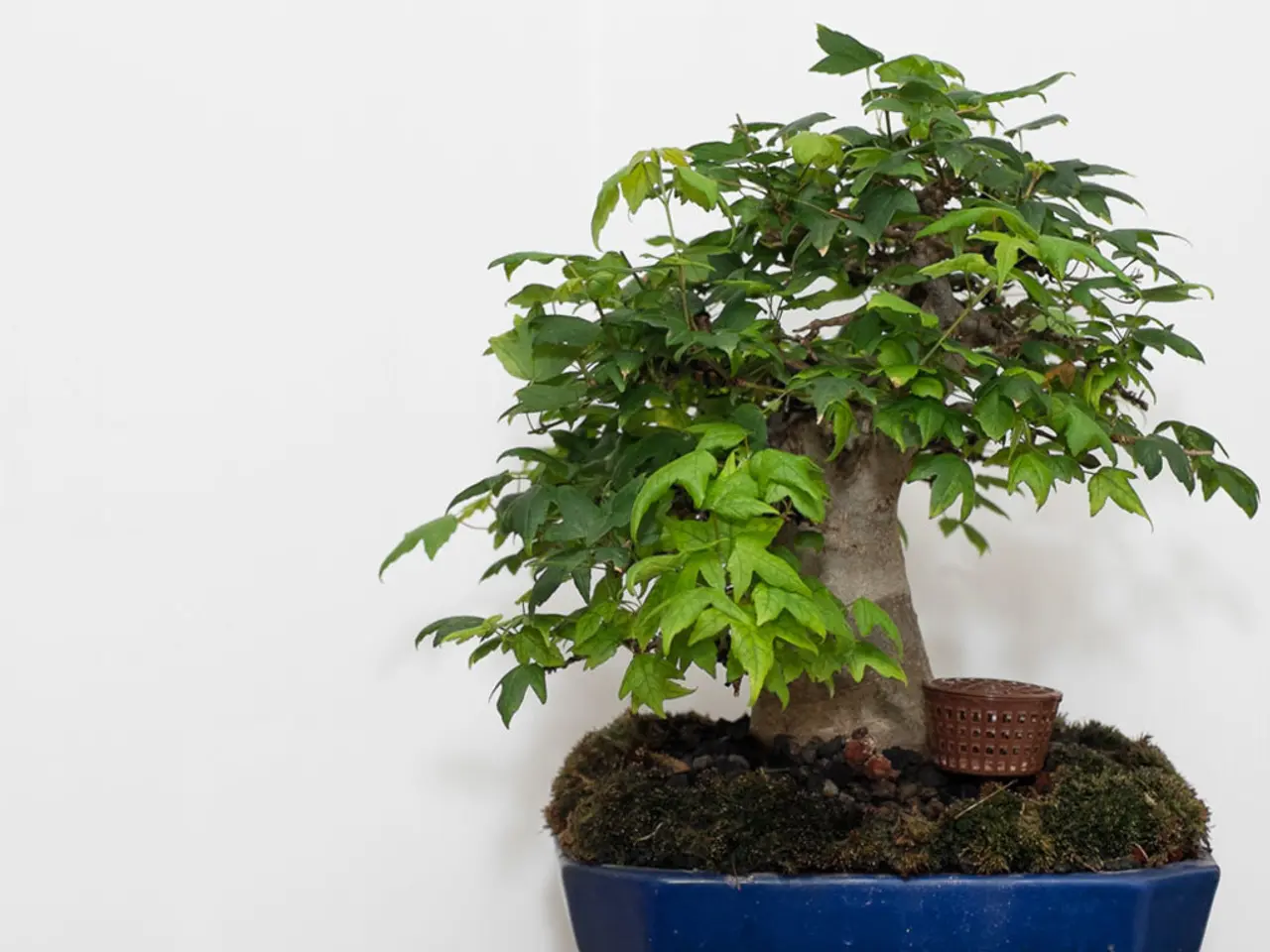Techniques and Tips for Successfully Shaping Indoor Bonsai Trees for a Healthy Growth
Indoor bonsai trees, these living sculptures, can bring a touch of nature into any home. However, they require careful attention to ensure their health and longevity. Here's a guide to the best practices for maintaining the balance of light, humidity, and temperature for your indoor bonsai.
**Light**
Provide your indoor bonsai with 6 to 8 hours of bright, indirect sunlight daily. An east-, south-, or west-facing window is ideal, offering enough light without harsh direct midday sun. If natural light is insufficient, especially in winter, use grow lights to supplement lighting. Remember to avoid exposing indoor bonsai to full direct sun for extended periods, but do allow outdoor exposure during warmer months if conditions permit.
**Humidity**
Bonsai trees generally appreciate moderate to high humidity, especially tropical varieties like ginseng ficus. Use a humidity tray filled with water and pebbles under the pot or a small room humidifier near the bonsai to raise humidity levels indoors. Avoid placing bonsai near dry heat sources such as radiators or air conditioners.
**Temperature**
Maintain a comfortable room temperature tailored to the bonsai species. For example, ginseng ficus prefers temperatures above 60°F (16°C), while juniper bonsai thrive between 60-75°F (15-24°C). If moving bonsai outdoors during warmer months, ensure temperatures are consistently above these minimums and avoid excessive afternoon sun exposure.
**Additional Care Tips**
Water when the soil begins to dry but avoid overwatering, which can cause root rot. Ensure bonsai are planted in well-draining soil mixes appropriate for their species. Fertilize regularly but moderately, usually monthly with diluted multi-purpose fertilizer for indoor bonsai.
Pruning indoor bonsai trees plays a pivotal role in shaping their aesthetic appeal. Techniques like pinching and pruning must be refined for reduced light intensity. Temperatures should be consistent and moderate, between 65°F to 75°F (18°C to 24°C). Repotting every 2-5 years is necessary to prevent root-bound conditions and maintain ideal soil health and tree growth.
Indoor bonsai trees require a nuanced understanding of light, humidity, temperature, and pruning for growth. Regular monitoring and preventative measures, such as misting and proper humidity control, are essential to prevent infestations. Using a well-draining, specifically designed bonsai soil mix is crucial for indoor bonsai trees to prevent waterlogged roots and guarantee healthy growth.
By carefully balancing these factors—providing ample indirect light, maintaining humidity with trays or humidifiers, and keeping temperatures within species-appropriate ranges—you can successfully nurture the health and longevity of your indoor bonsai trees. This not only ensures the beauty of your living sculptures but also offers the added benefit of reducing stress levels for 80% of indoor bonsai enthusiasts. Happy gardening!
- If you have a soft spot for pets, you might enjoy nurturing a bonsai tree as well, as caring for these living sculptures offers similar benefits and can even help reduce stress levels.
- To complete your home's aesthetic, consider pairing your indoor bonsai with a thoughtfully chosen piece from the fashion-and-beauty or home-and-garden departments at your local store, enhancing your lifestyle in a harmonious manner.
- In the realm of leisure activities, you could plan a travel itinerary that includes visiting scenic bonsai gardens around the world. A unique combination of food-and-drink experiences and exploring new cultures would make for an unforgettable petite voyage.
- After a long day of work and managing relationships, returning home to your well-loved, verdant bonsai tree can serve as a source of rejuvenation and relaxation before embarking on some shopping escapades with your car, perhaps to acquire more indulgent items like exotic flowers or promise-bearing trinkets.




